The newest version of the Santa Cruz Nomad is following in big footsteps. The predecessor was extremely popular, above all because of its versatility. The new version has gained a significant portion of downhill performance, but is it at the cost of versatility?
For an overview of the test fleet head to the group test: The Crème de la Crème – Nine high-end enduro bikes of 2018 in comparison

170/170 mm (f/r) | 13.39 kg | € 9,899
Every time you look at the Santa Cruz Nomad, you’ll find something new that you just love the bike for. The internally routed cables run through special casings – no more rattling. The brake cable runs along the outside, the bottom bracket is threaded, and a shuttle-pad protects the down tube during transport on pickups; it’s every biker’s dream. Everything about the bike radiates quality workmanship, which is underlined by the fact that Santa Cruz gives a lifetime warranty on the frame and the bearings. Santa Cruz offers the Nomad as an aluminium version as well as two different carbon variants. The top CC version we tested saves a few grams of weight, but is identical to the less expensive C version regarding durability and geometry. With a price tag of € 9,899, their top-of-the-range model is not a bargain, but you get only the finest components. A SRAM XX1 Eagle drivetrain and the Reserve Carbon wheels are top-notch… even the 2.5″ MAXXIS Minion DHF front tire excited us.

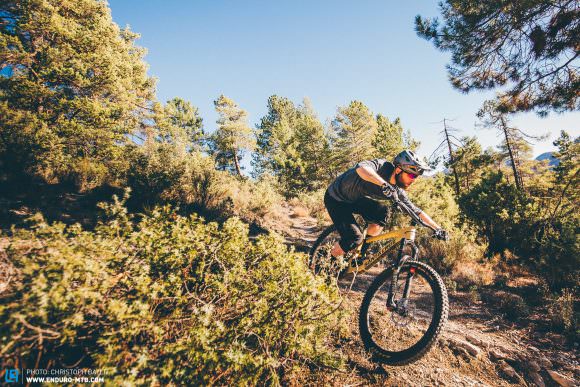
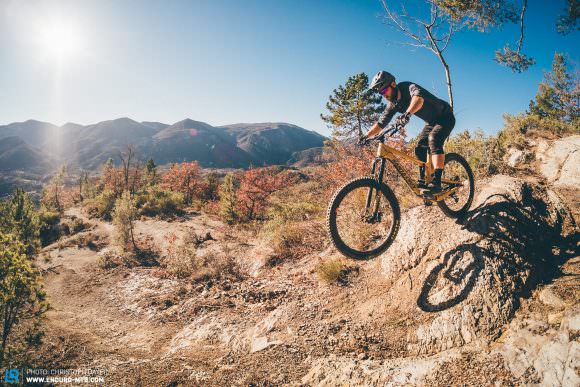
Good, better, Santa Cruz! The Nomad won us over with its first-class workmanship, brilliant handling, and a lifetime warranty!
Of course, the Nomad, like all other Santa Cruz bikes, has a VPP rear linkage. For maximum downhill performance, however, Santa Cruz relies on a linkage design similar to their V10 downhill bike, which gives the rear a much more sensitive response. Nevertheless, the rear suspension works very efficiently. Even without lockable platform damping the bike hardly bobs, and thanks to the steep seat tube angle, going uphill is less of a chore. Only in tight technical sections does the Nomad require a bit more physical effort to keep the front wheel tracking.
However, climbing is only a means to an end with this bike. What was the Nomad built for? For maximum speed and fun going downhill! And here the Santa Cruz’s linkage comes into its own, simply absorbing blows while still offering a lot of feedback and support. On fast and hard trails, the bike is in its element and blew us away with an enormous amount of stability. It’s also striking how quiet the bike is. In tight sections and at low speeds, however, the Nomad requires engaged riding style to achieve a good balance between the wheels. If you do not actively shift your weight forward, you will keep on going straight ahead when in fact you’d like to turn. Flat trails bore the new Nomad.
The Santa Cruz Nomad 4 CC XX1 in detail
Fork RockShox Lyrik RCT3 170 mm
Rear shock RockShox Super Deluxe RCT 170 mm
Brakes SRAM Code RSC 200/180 mm
Drivetrain SRAM XX1 Eagle
Seatpost RockShox Reverb Stealth 150 mm
Stem Race Face Turbin R 50 mm
Handlebar Santa Cruz Carbon Bar 800 mm
Tires MAXXIS Minion DHF 2.5″
Wheelset Santa Cruz Reserve 30 Carbon
Weight 13.39 kg
Price € 9,899
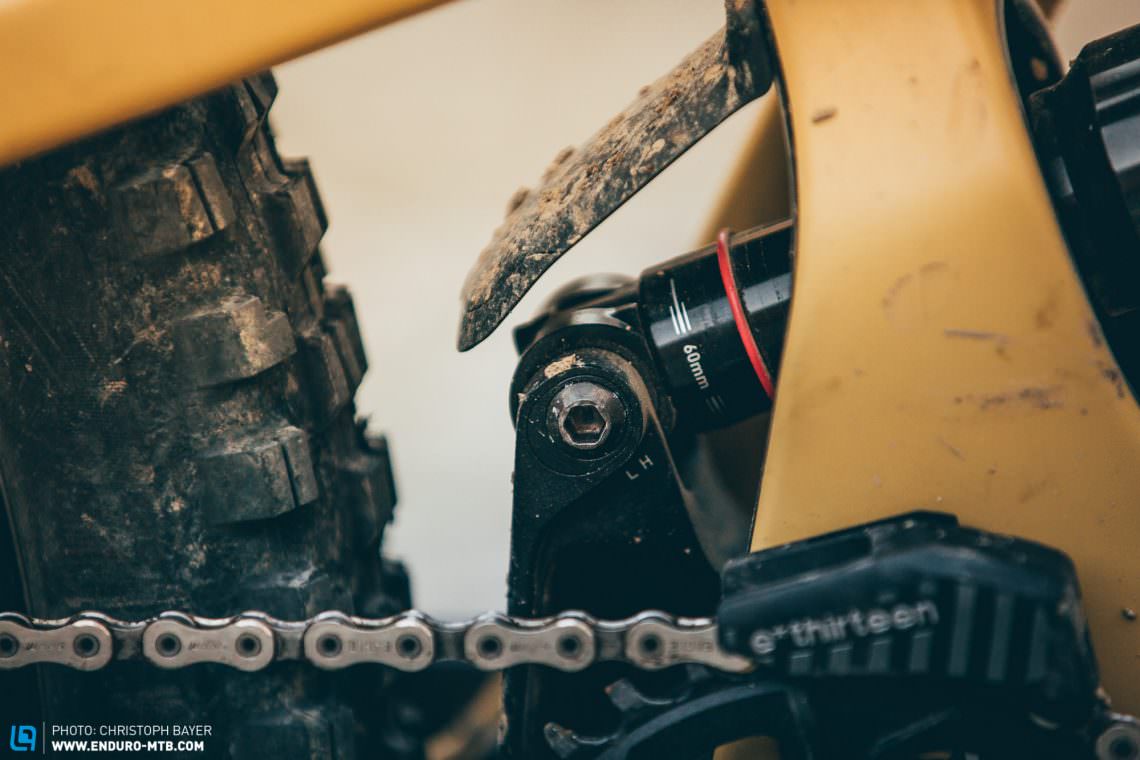
Even in the high setting, the Nomad is a downhill monster. The low setup is especially suitable for bike park days.
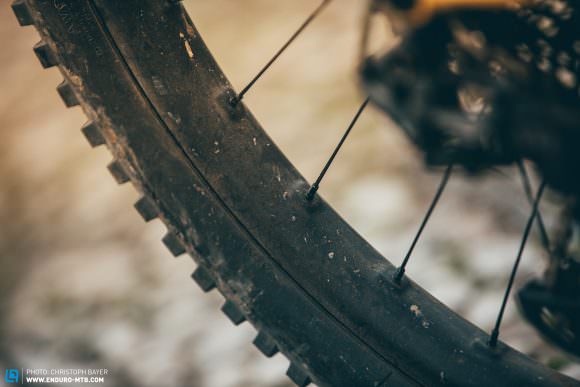
Carbon wheels often have the problem of being too stiff and therefore uncomfortable. With their Reserve wheels, however, Santa Cruz has achieved a very good compromise between stiffness and flex.
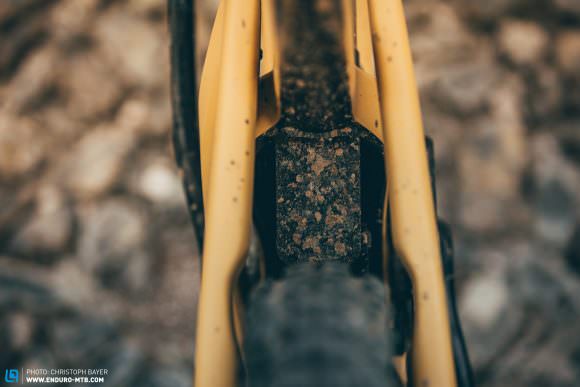
With the new linkage, the damper sits far down in the frame, which noticeably lowers the centre of gravity. To protect the shock from flying debris, Santa Cruz has developed its own small fender.

The fact that the guys from Santa Cruz also do a lot of tinkering on their bikes themselves becomes clear when looking at how the brake line is routed. Anyone who has ever changed the rear brake will be pleased with the external routing.
The geometry of the Santa Cruz Nomad
| Size | XS | S | M | L | XL |
|---|---|---|---|---|---|
| Seat tube | 375 mm | 390 mm | 420 mm | 450 mm | 480 mm |
| Top tube | 540 mm | 573 mm | 596 mm | 619 mm | 653 mm |
| Head tube | 90 mm | 100 mm | 110 mm | 120 mm | 130 mm |
| Head angle | 65° | 65° | 65° | 65° | 65° |
| Seat angle | 74.5° | 74.5° | 74.5° | 74.5° | 74.5° |
| Chainstays | 430 mm | 430 mm | 430 mm | 430 mm | 430 mm |
| BB High | 344 mm | 344 mm | 344 mm | 344 mm | 344 mm |
| Wheelbase | 1134 mm | 1168 mm | 1192 mm | 1217 mm | 1251 mm |
| Reach | 390 mm | 420 mm | 440 mm | 460 mm | 490 mm |
| Stack | 584 mm | 593 mm | 602 mm | 611 mm | 620 mm |

Conclusion
The new Santa Cruz Nomad needs it rough! With its plush suspension and the downhill-oriented geometry, it craves ever harder trails and higher speeds. Its climbing performance is solid, though it’s not quite as versatile as its predecessor: flow-trails bore this bike.
Strengths
+ demanding terrain doesn’t slow it down
+ super-quiet – no rattling here!
+ lifetime warranty on frame and bearings
Weaknesses
– easier trails bore the bike
– requires an engaged riding style to ensure optimal weight distribution
Uphill
Downhill
Stability
Agility
Value for money
For more info head to: santacruzbicycles.com
The test fleet
For an overview of the test fleet head to the group test: The Crème de la Crème – Nine high-end enduro bikes of 2018 in comparison
All bikes in test: Cannondale Jekyll 1 | Canyon Strive CF 9.0 | Evil The Wreckoning X01 | Kona Process 153 CR 27,5 | Merida ONE-SIXTY 8000 | Orbea Rallon M-Team | Specialized Enduro 29 Pro | Trek Slash 9.8
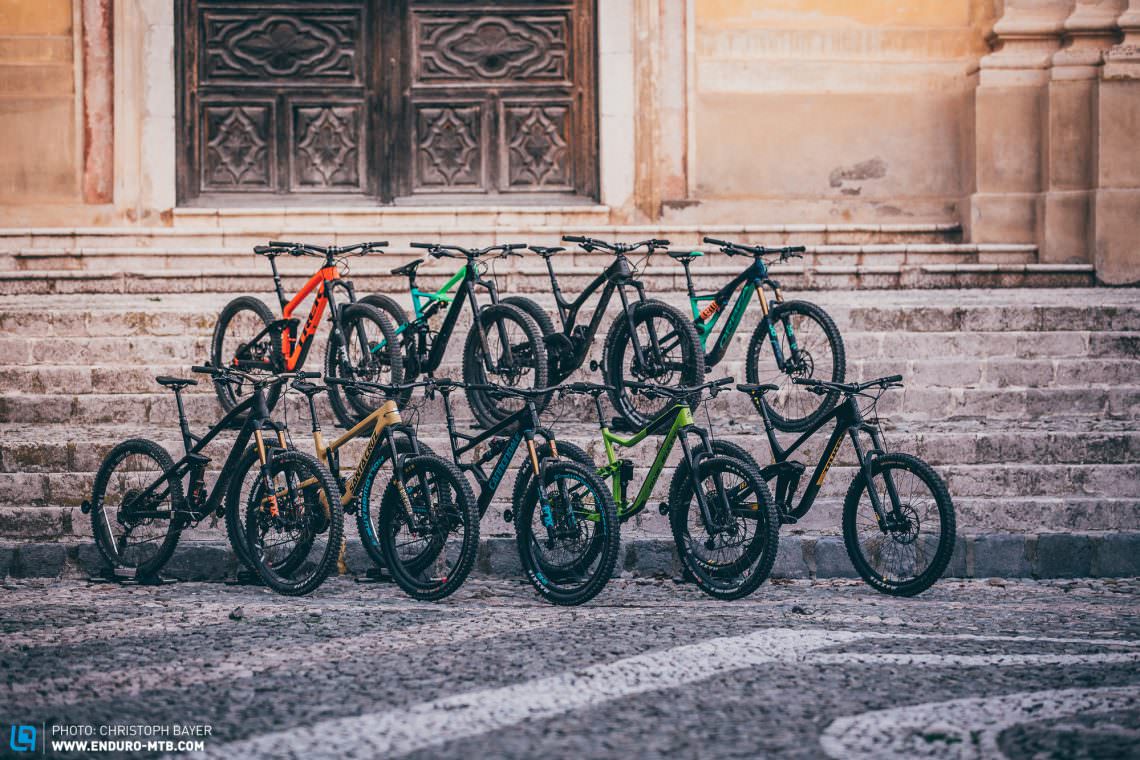
This article is from ENDURO issue #032
ENDURO Mountainbike Magazine is published in a digital app format in both English and German. Download the app for iOS or Android to read all articles on your tablet or smartphone. 100% free!

Did you enjoy this article? If so, we would be stoked if you decide to support us with a monthly contribution. By becoming a supporter of ENDURO, you will help secure a sustainable future for high-quality mountain bike journalism. Click here to learn more.
Words: Photos: Christoph Bayer, Valentin Rühl











